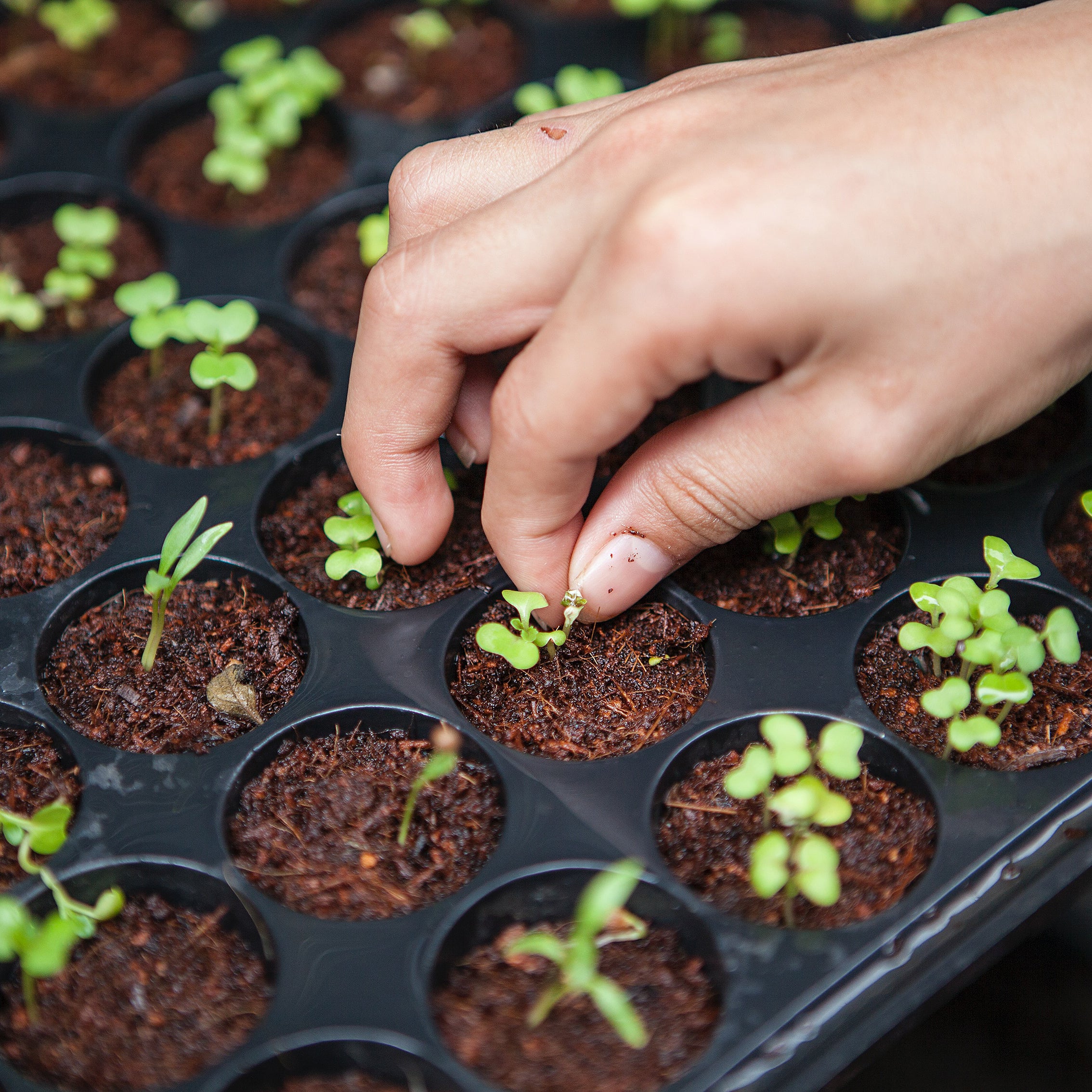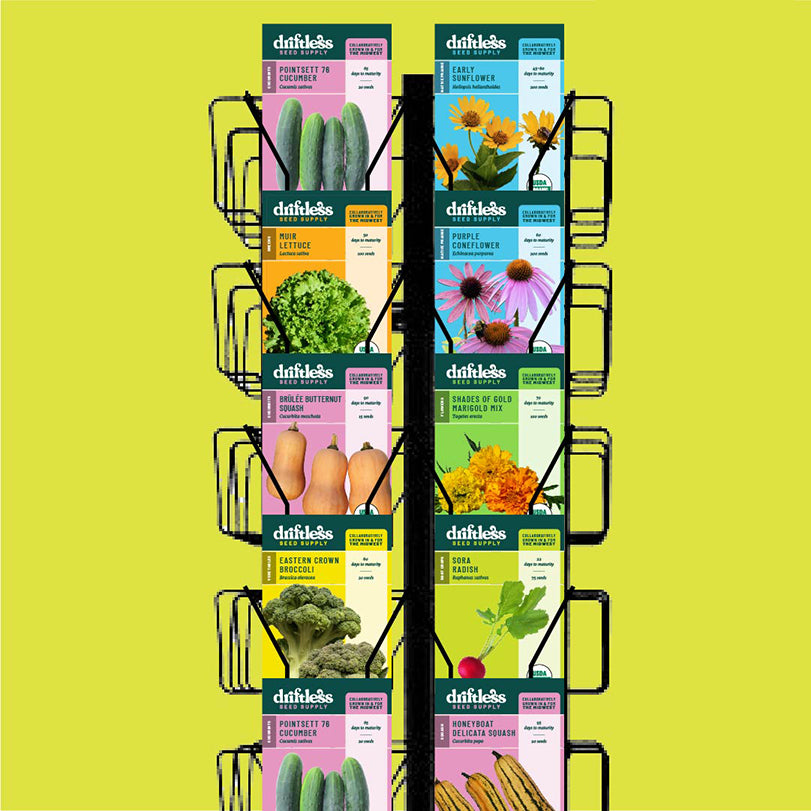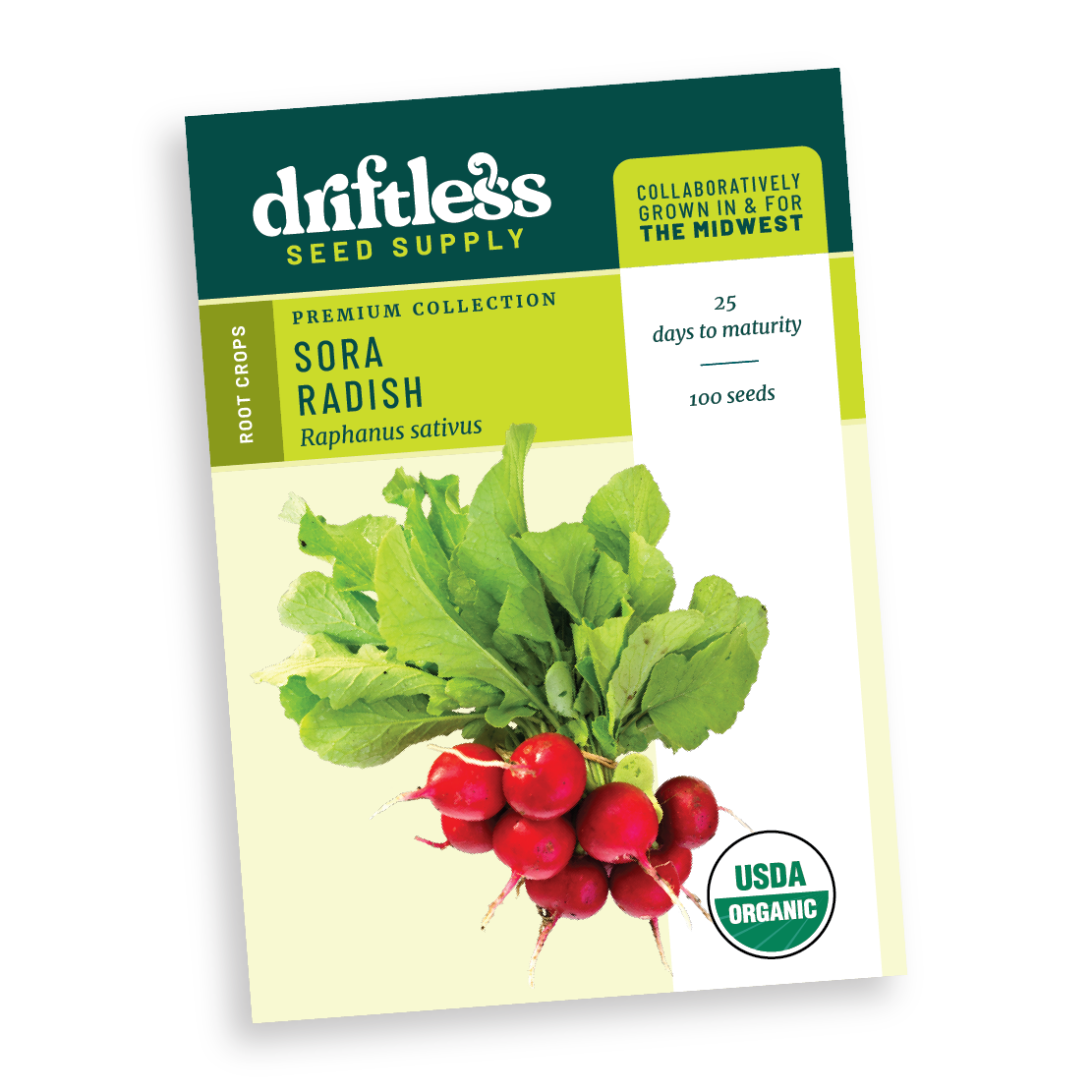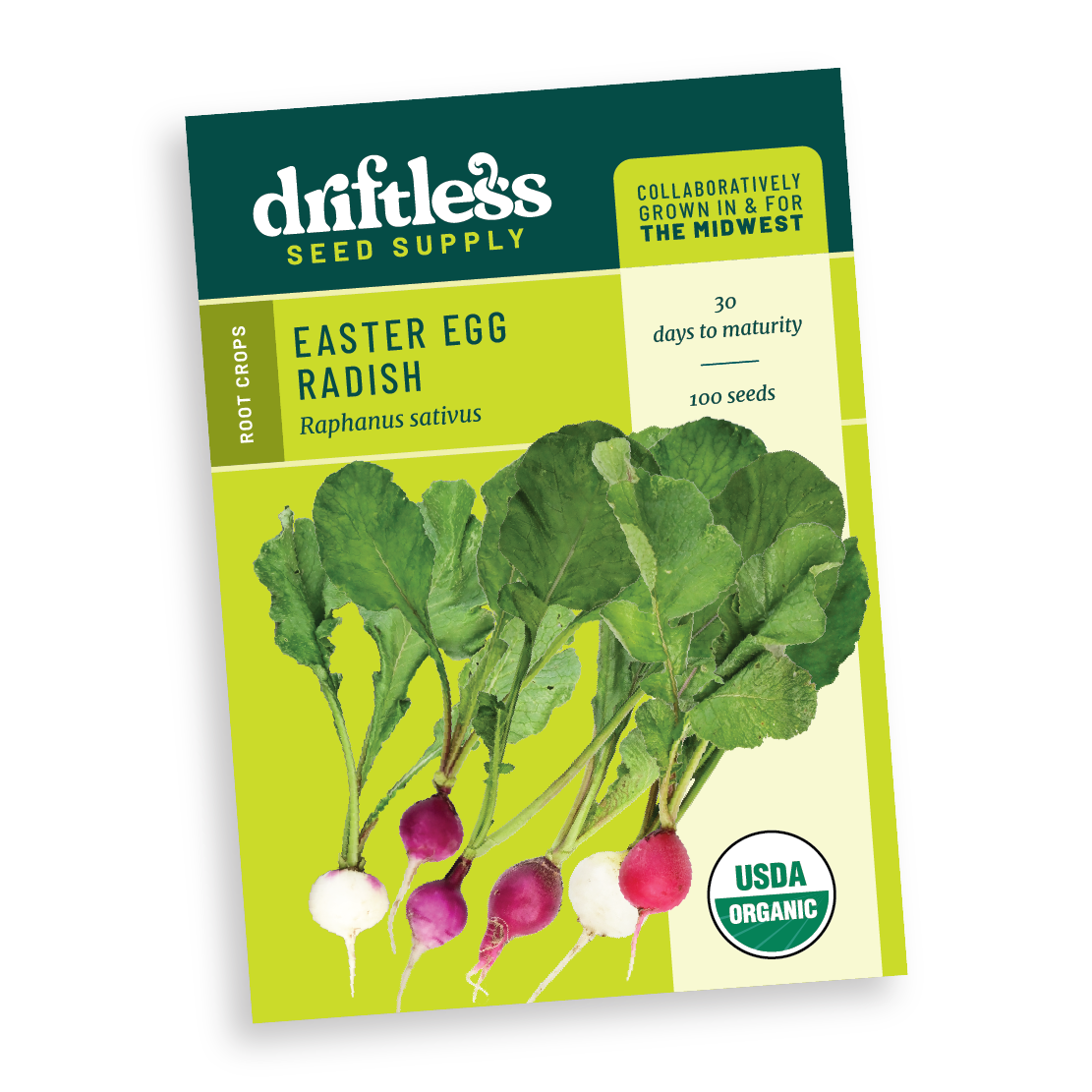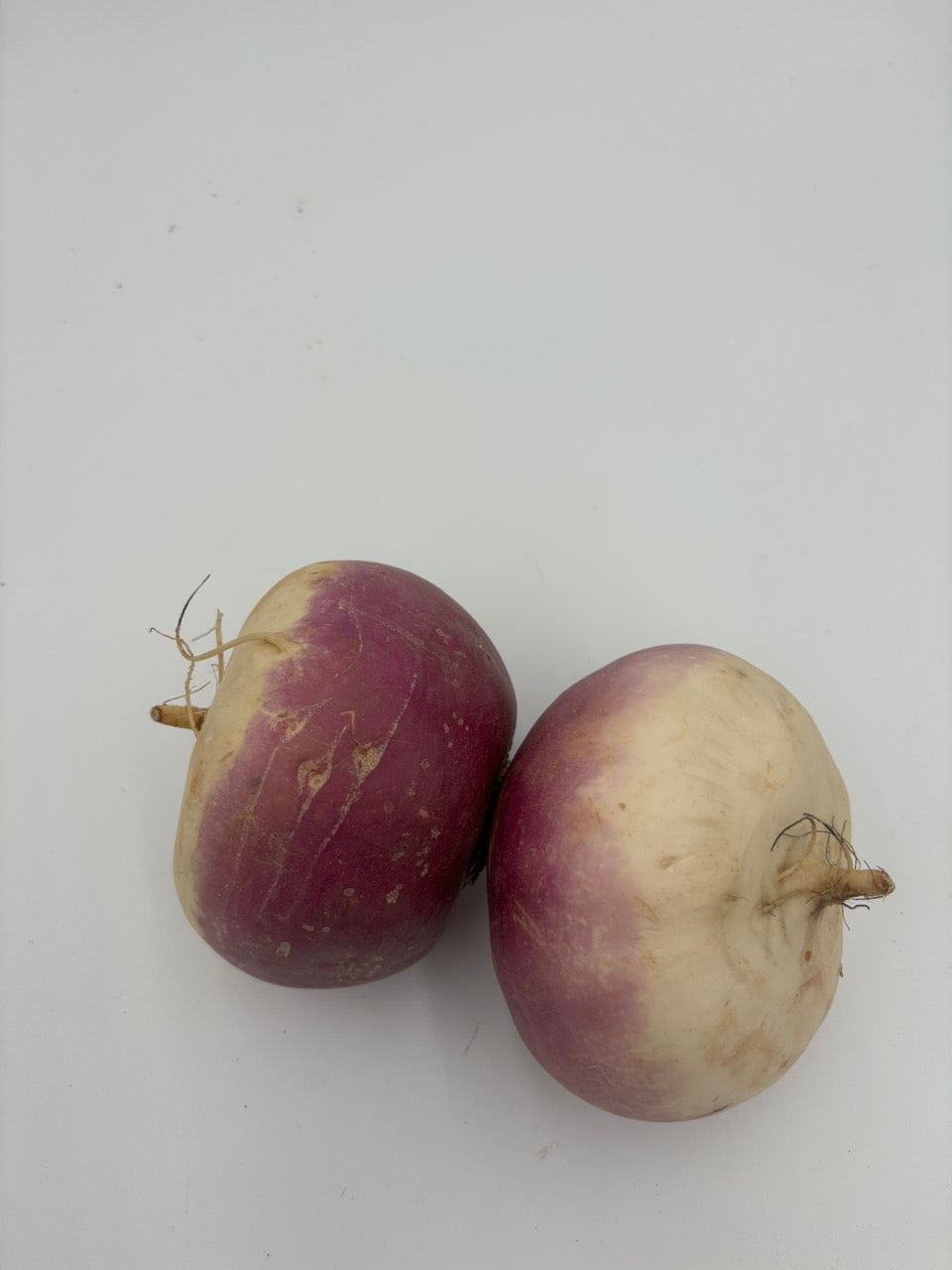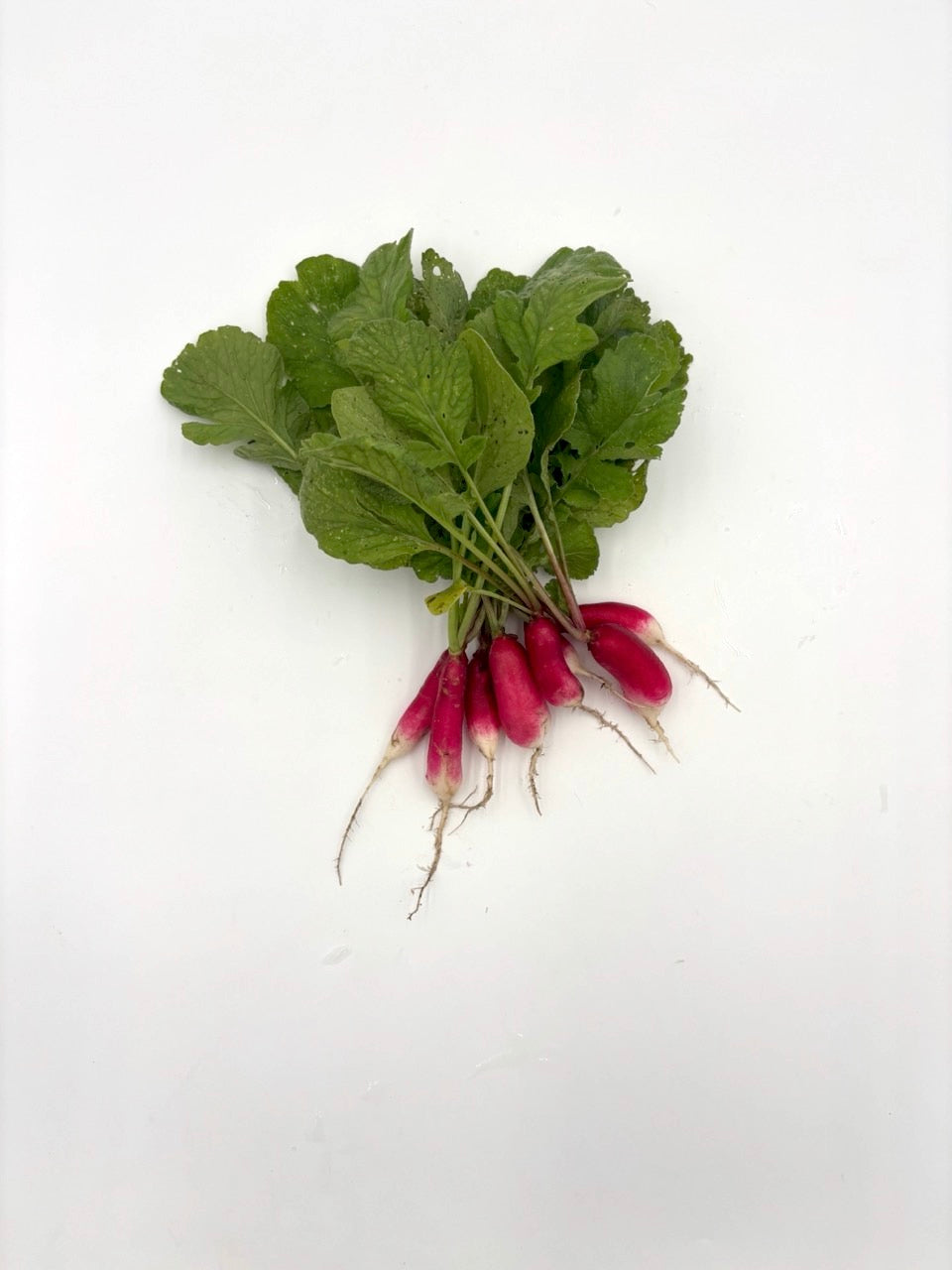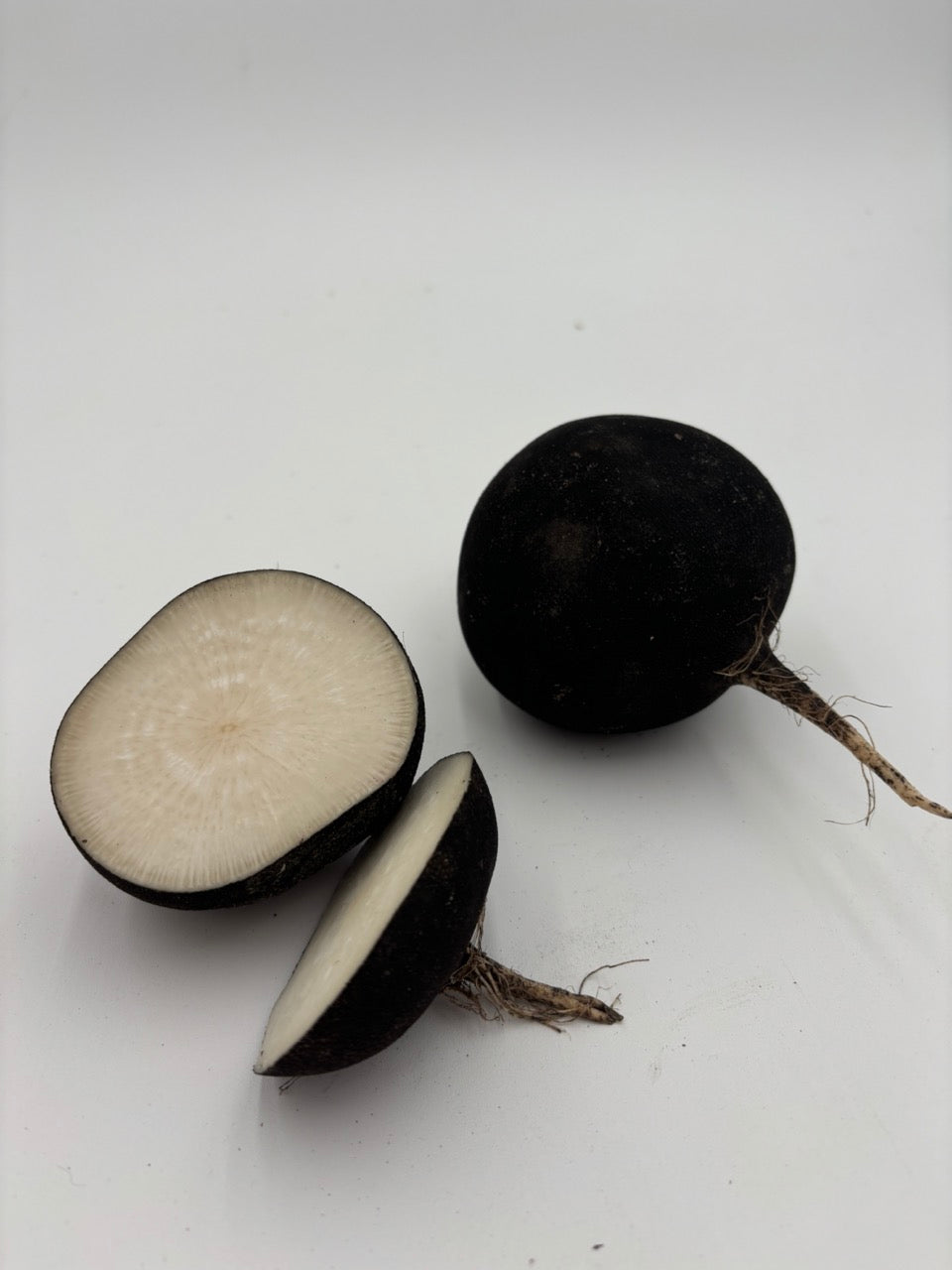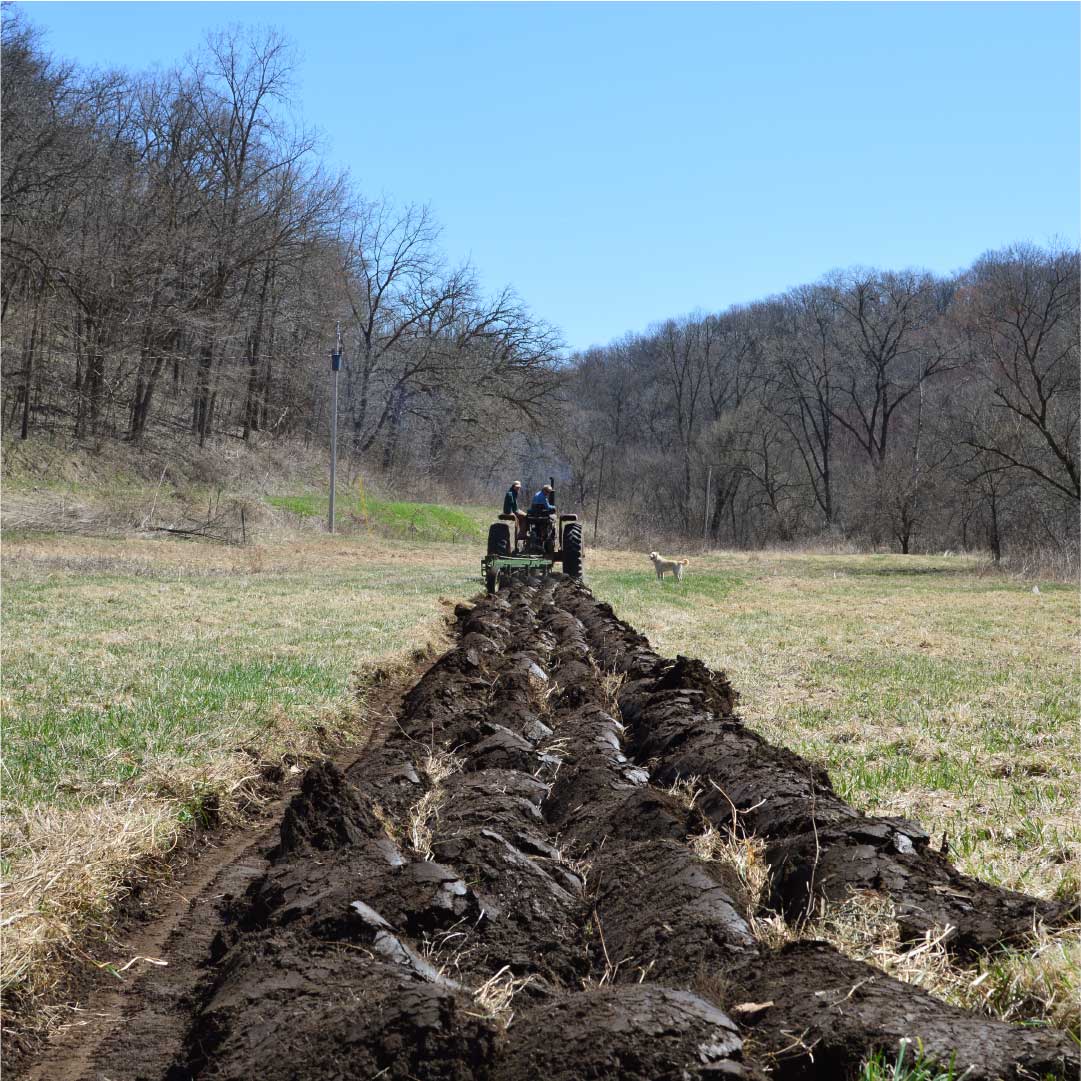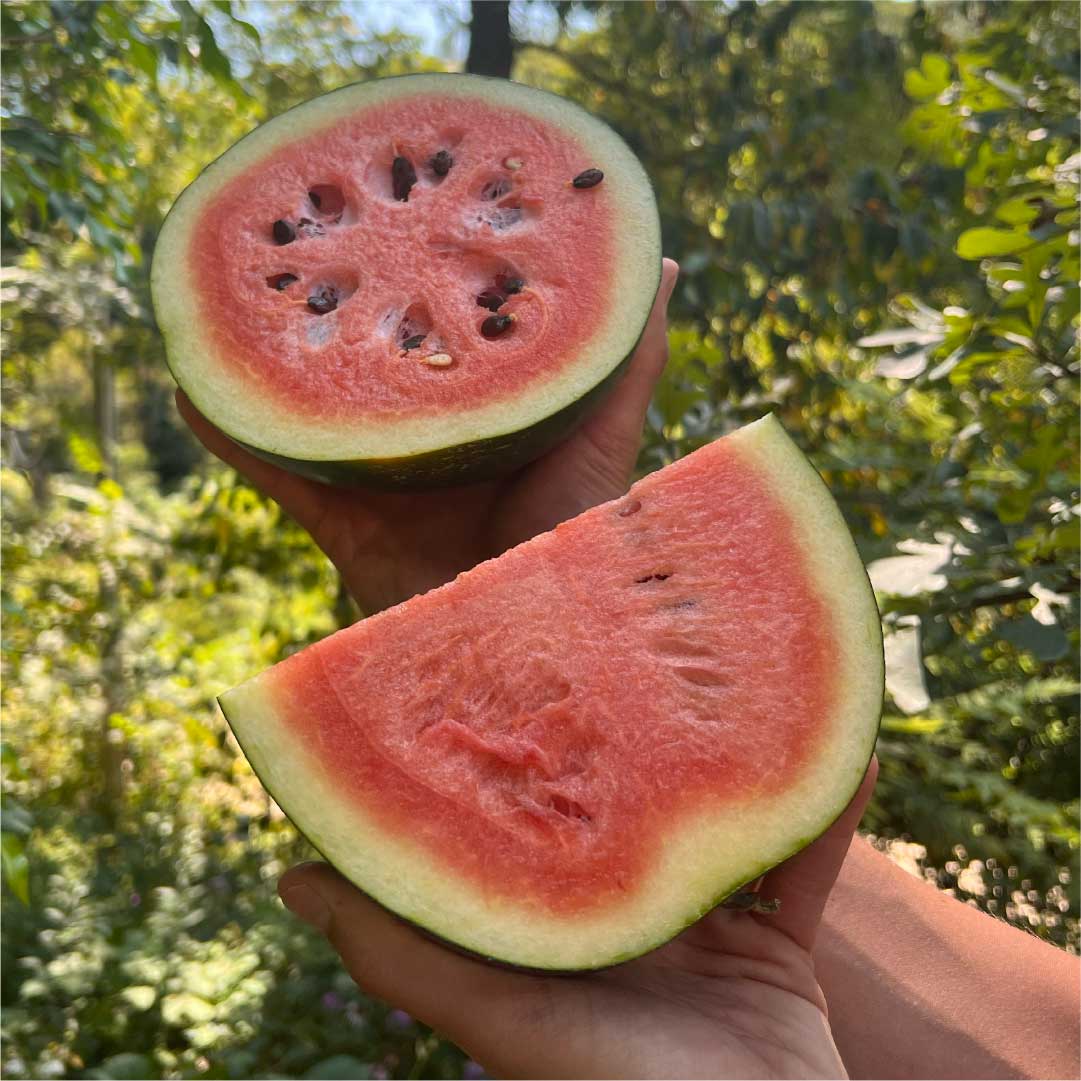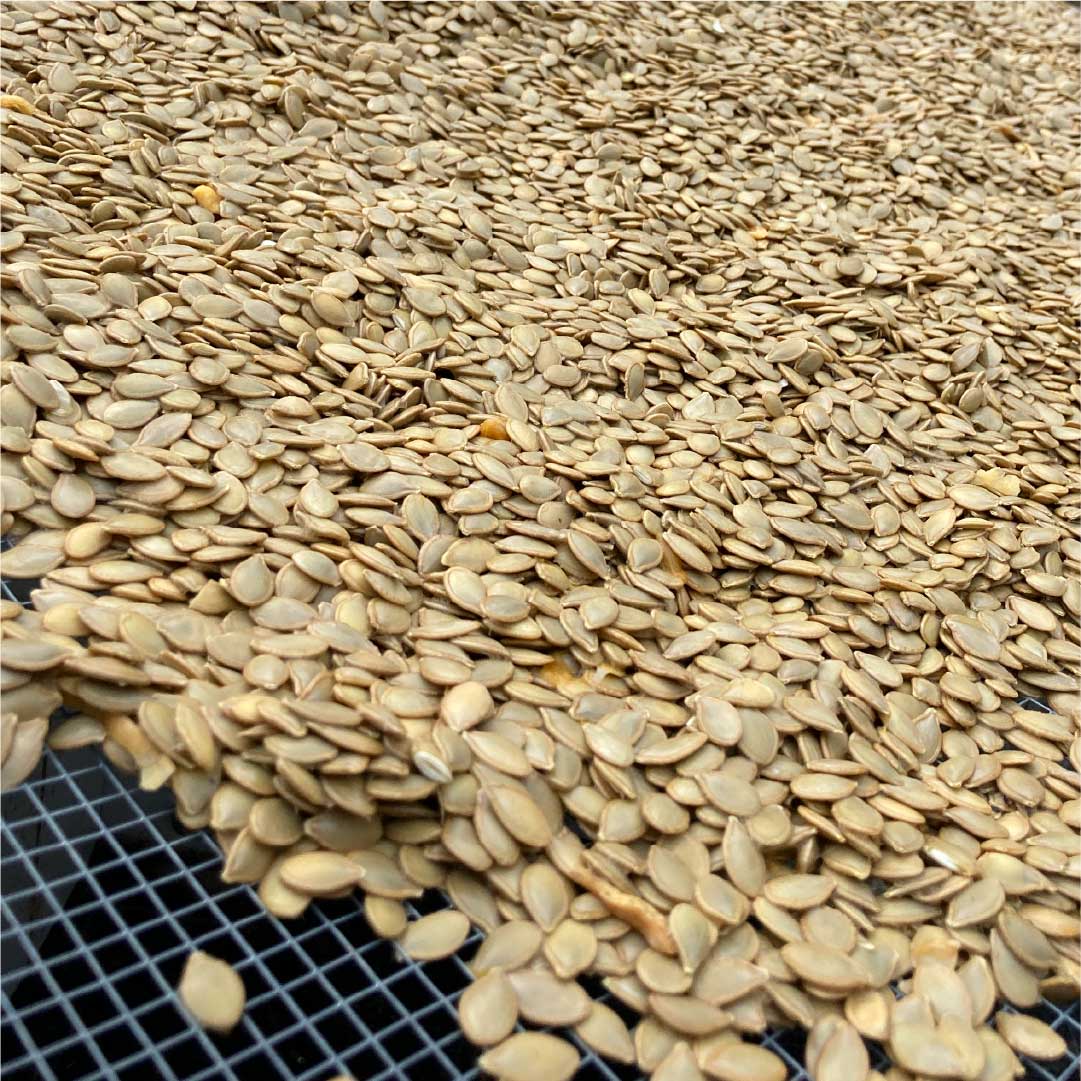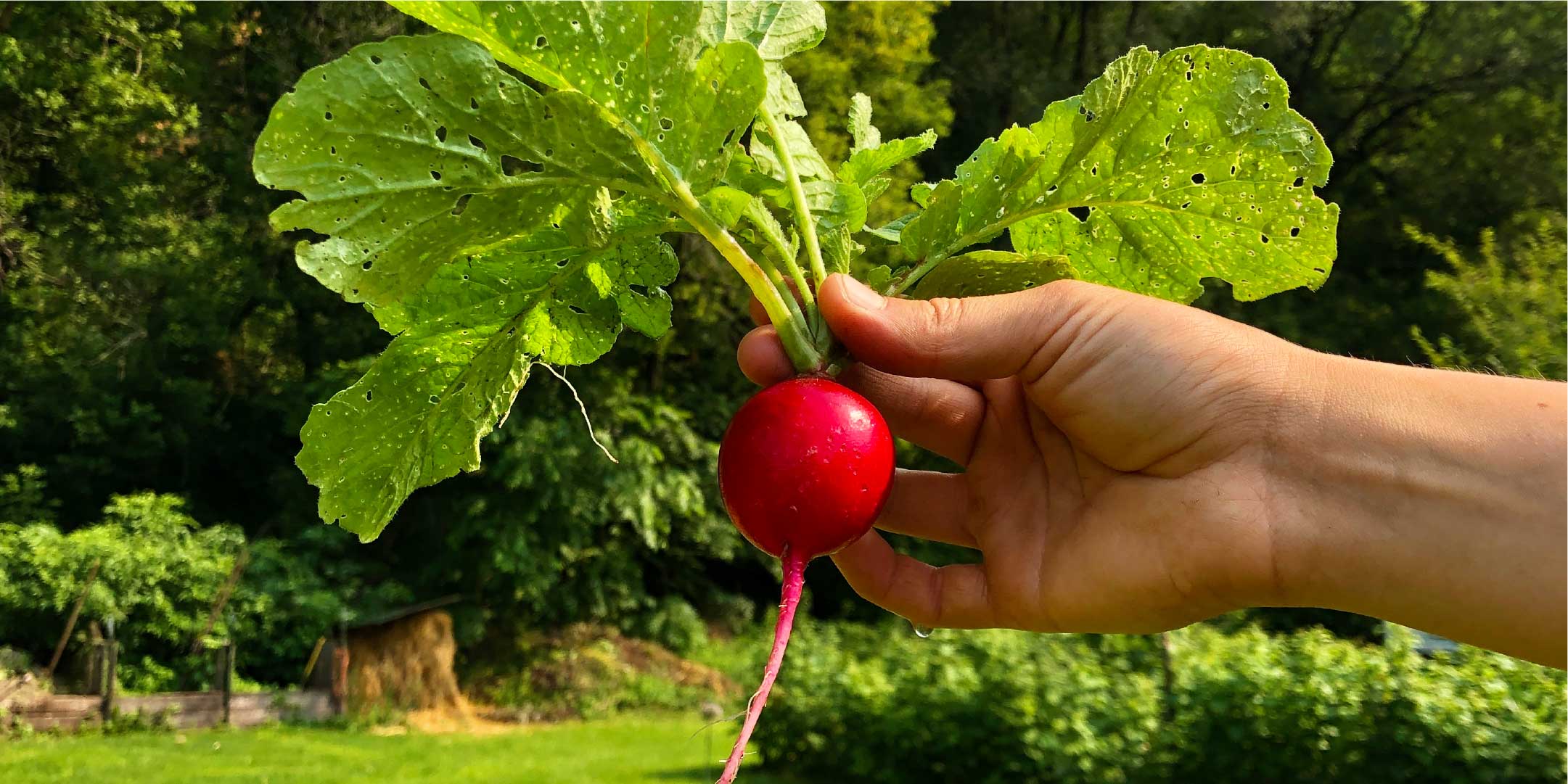
Driftless Seed Supply Grower Resources
Radish Growing Resources
History and Cultural Significance of Radishes
Radishes (Raphanus sativus) have a long history of cultivation, dating back to ancient Egypt, Greece, and Rome. In ancient times, radishes were valued for their medicinal properties and were used to treat a variety of ailments. The cultivation of radishes spread throughout Europe during the Middle Ages, and the plant was brought to the Americas by European settlers in the 16th century. Today, radishes are grown and consumed all over the world, with many different varieties and colors available. They are commonly used in salads, as a garnish, or eaten on their own, and are known for their crisp, spicy flavor.
1) Site Selection and Soil Preparation
Choose a site that receives full sun to partial shade and has well-drained, fertile soil with a pH between 5.8 and 6.8. Work in compost or well-rotted manure before planting to improve soil fertility and structure.
2) Planting
For spring radishes, sow seeds directly in the garden as soon as soil can be worked in early spring, or in late summer for a fall crop. Space seeds 1/2 inch apart in rows 6-12 inches apart. For storage radishes like daikon, sow seeds 1/2 inch deep in mid- to late summer, about 60 days before the first expected fall frost. Space seeds 1-2 inches apart in rows 12-18 inches apart.
3) Watering and Fertilization
Keep soil consistently moist but not waterlogged. Fertilize with a balanced organic fertilizer at planting and again 3-4 weeks later. (See below for more information on fertilizer for radishes).
4) Thinning and Harvesting
For spring radishes, thin seedlings to 1-2 inches apart when they have 2-3 true leaves. Harvest when roots are mature, usually 3-4 weeks after planting. For storage radishes like daikon, thin seedlings to 4-6 inches apart when they have 4-5 true leaves. Harvest when roots are mature, usually 60-75 days after planting.
5) Pests and Diseases
Monitor for pests such as flea beetles and root maggots, and control with row covers, beneficial insects, or organic insecticides as needed. Rotate radish crops to prevent disease buildup, and avoid planting radishes in soil that has recently grown other Brassica crops.
Overall, radishes are easy and quick to grow, and can be a great addition to any garden or farm. By following these general production recommendations, growers can achieve healthy and abundant crops of both spring and storage radishes.
The recommended fertilizer rate for radish production will depend on several factors, including the fertility of the soil, the desired yield and quality of the crop, and the stage of growth of the radishes. As a general guideline, radishes have a relatively low nitrogen requirement compared to other crops, and applying too much nitrogen can result in excessive leaf growth at the expense of root development.
For most soils, a nitrogen rate of 40 to 60 pounds per acre is adequate for radish production. If the soil is already high in fertility or has received adequate amounts of organic matter, additional nitrogen may not be necessary. In addition, it is important to consider the nitrogen contribution of any cover crops or organic amendments that have been incorporated into the soil prior to planting.
It's also worth noting that nitrogen requirements may vary depending on the variety of radish being grown. For example, some varieties of daikon radish may require slightly higher nitrogen rates to achieve optimal yields. It's always a good idea to consult with a local agricultural extension service or other expert source for specific recommendations tailored to the particular conditions of a given growing site.

